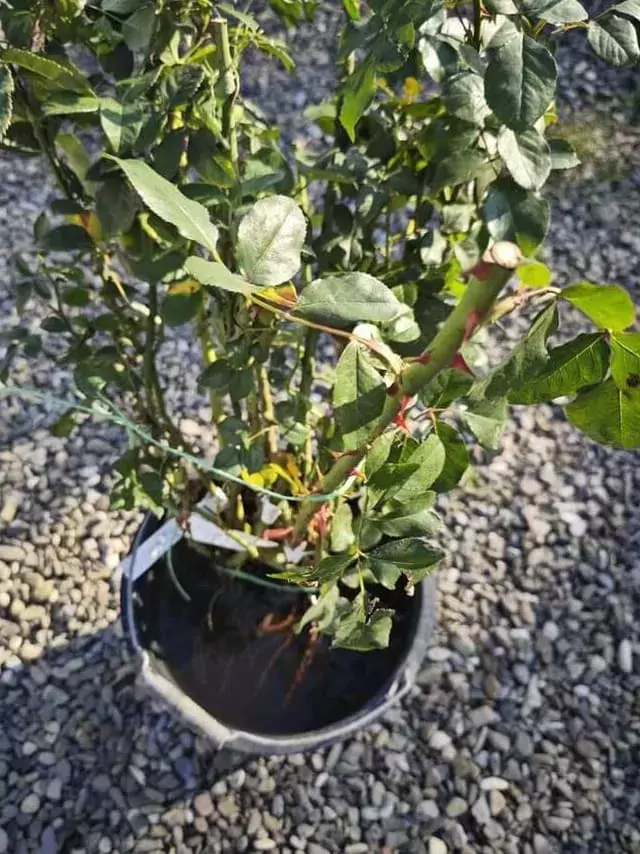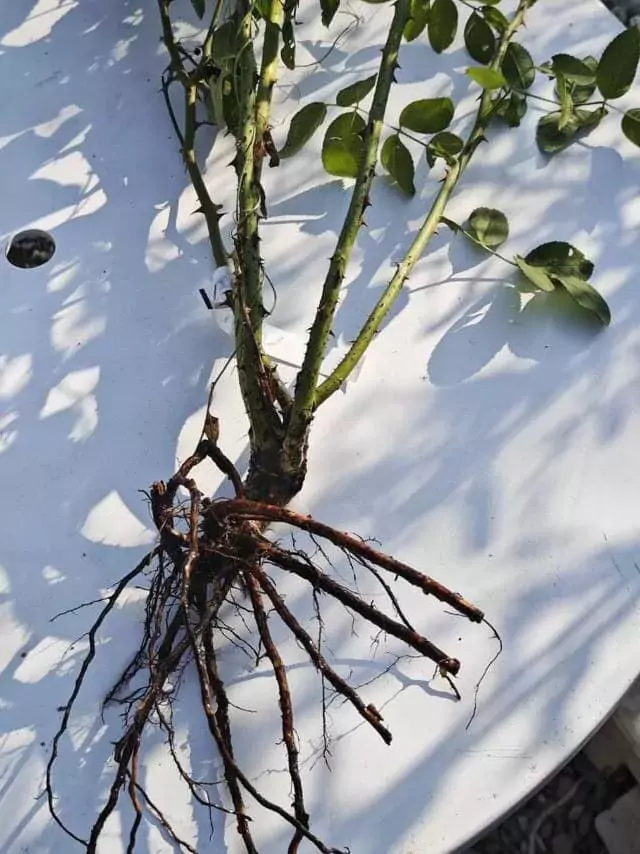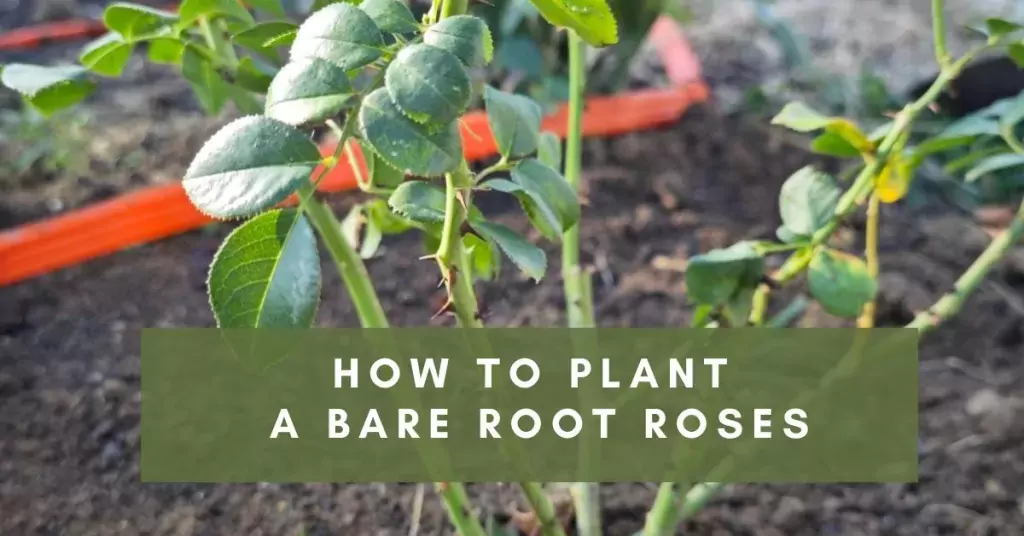Planting bare-root roses is a strategic and budget-friendly approach to transforming your garden into a vibrant oasis. Unlike potted plants, these roses arrive with bare roots, making them perfect candidates for fall and winter planting. This comprehensive guide will walk you through the intricate process of planting bare-root roses, ensuring your garden thrives come spring.
Choosing the Perfect Spot: Where to Plant a Bare Root Rose
Picking the right location is crucial for the success of your bare-root roses. Here’s how to create an ideal environment for your budding blooms:
Sunlight Requirements:
Ensure the chosen spot receives a minimum of 4 hours of sunlight daily. While roses love the sun, a bit of afternoon shade can be beneficial, especially in hot regions.
Adequate Space:
Allocate enough room to prevent competition from neighboring plants, like trees and hedges. This prevents the rose’s roots from being stifled, allowing them to spread freely and absorb essential nutrients. Roses are incredibly adaptable, allowing you to design your garden creatively.

Timing Matters: When to Plant Bare Root Roses
Bare-root roses flourish when planted between October and April during their dormant season. This period allows the roses to establish their roots, ensuring they burst into full bloom when summer arrives. However, avoid planting when the ground is frozen, waterlogged, or experiencing drought conditions.
Tips for Planting Success: Handling Bare-Root Roses with Care
Proper handling can significantly impact the growth of your bare-root roses. Follow these essential tips for planting success:
Moist Roots:
If roots emerge before planting, keep them moist until you plant. Rinse the roots in water if planting within 12 hours.
Extended Delays:
Position the roots at a 45-degree angle in a shaded trench or a large pot for longer delays. Cover them with soil, compost, or peat moss, ensuring they stay moist to prevent damage.
Rooting Agent:
Consider soaking roots in water with a rooting agent for enhanced moisture and root establishment.

Planting Techniques and Expert Tips
Now that you’ve chosen the perfect location and prepared your garden bed, it’s time to delve into the finer details of planting bare root roses. This section will guide you through advanced techniques and expert tips to ensure your roses thrive and grace your garden with their beauty.

1. Pruning Roots:
Before planting, inspect the roots and trim any broken, injured, or excessively long roots. Pruning encourages the growth of healthy roots, fostering a robust foundation for your rose plant.
2. Planting Depth:
When planting, position the bud union—an evident swelling at the base of a grafted rose plant—approximately 1 inch above the soil surface in warmer climates. In colder regions, plant the bud union 1 inch below the surface. For own-root roses, which develop their root systems from cuttings, plant them about 1 inch deeper than their pot depth. Use your shovel handle as a guide for accurate planting depth.
Planting Techniques for Optimal Growth
Soaking Roots: Before planting, immerse the roots in a bucket of water for at least two hours (but no longer than 12 hours). This hydrates the roots and prepares them for the transition into the soil.
Fertilizing: Enhance the soil’s nutrient content by adding two shovelfuls of composted manure or compost to the planting hole. Incorporate this organic matter into the bottom soil to provide a rich and fertile environment for your rose plant.
Planting Process: How to Plant Bare-Root Roses
Equip yourself with the necessary tools and follow these steps to ensure your bare-root roses thrive:
1. Dig a Hole:
Dig a hole with a garden spade that matches the depth and width of the rose’s roots. Set aside the excavated soil for later use.
2. Prepare the Base:
Fork the base of the hole and add a handful of slow-release granular fertilizer, such as pelleted chicken manure. Gently firm the base with your foot to create a stable foundation.

3. Position the Rose:
Set the bare-root rose in place and use a bamboo cane placed across the hole to gauge the final soil level around the plant. Aim to position the base of the stems slightly below this level.
4. Backfill and Mulch:
Mix a spadeful of compost with the soil excavated from the hole. Fill in the gap around the roots, firming the layers with your foot as you go. Once the hole is full, apply a mulch of well-rotted compost to the soil’s surface. This mulch conserves moisture and supports healthy growth.
Following these steps and providing the ideal environment pave the way for a flourishing rose garden.
Caring for Your Roses: Essential Aftercare and Maintenance Tips
Cultivating beautiful roses doesn’t end with planting; it requires diligent aftercare and maintenance to ensure your blooms flourish. Here’s a comprehensive guide to nurturing your roses and keeping them vibrant year-round.
Watering for Healthy Roots
After planting, give your roses a thorough watering to settle the soil and eliminate air pockets around the roots. During the initial weeks, regular and deep watering is crucial for establishing secure roots. Consistent moisture promotes robust growth, ensuring your roses thrive.

Pruning for Robust Canes
Regular pruning is essential for rose health. Monitor your roses for dead or broken wood, pruning these parts to encourage the development of strong canes. Newly planted roses benefit from a one-third reduction in size, redirecting the plant’s energy towards vital root growth.
Feeding for Nutrient Balance
As your roses grow, feed them with a balanced fertilizer specifically designed for roses. Follow the manufacturer’s instructions to avoid overfeeding, which can harm the plant. Proper feeding ensures your roses receive essential nutrients for lush foliage and vibrant blooms.
Mulching for Soil Health
Apply a layer of organic mulch, such as compost or straw, around the base of your rose plant. Mulching conserves soil moisture, regulates temperature, and suppresses weed growth. Maintain a few inches of mulch, ensuring it doesn’t directly touch the stem. This protective layer enhances the overall health of your roses.
Monitoring and Pruning: The Key to Health
Regularly inspect your rose plant for signs of disease or pest infestation. Swiftly prune diseased or damaged parts to prevent infections from spreading. Healthy pruning practices enhance air circulation, keeping your roses disease-free and thriving.
RELATED: What is a garden mulch?

Expert Tips for Vibrant Roses
1. Site Selection:
Choose a planting site away from competing trees and shrubs. Avoid planting roses where another rose previously died to prevent disease recurrence.
2. Patience and Observation:
Understand that roses require time to establish roots and grow. Be patient and observe your plants regularly. Healthy roses, nurtured with care, reward you with stunning blooms and lush foliage.
3. Winter Protection:
In colder climates, provide winter protection by mulching the base of the plant with straw or leaves. This safeguards the plant from freezing temperatures, ensuring its vitality in spring.
4. Continuous Learning:
Stay informed about your specific rose varieties. Each type may have unique care requirements. Continuous learning ensures you provide tailored care, maximizing your roses’ growth potential.
With these expert tips, your roses will survive and thrive, gracing your garden with their timeless beauty.
Frequently Asked Questions:
Newly planted roses require consistent moisture to establish their roots. Water deeply once or twice a week, depending on the weather conditions. Aim to keep the soil evenly moist, especially during dry spells. Striking a balance is essential, as overwatering can lead to root rot. Adjust your watering frequency based on your local climate.
Roses typically possess a fibrous root system consisting of shallow, spreading roots that efficiently absorb water and nutrients from the soil. Proper care during planting, including adequate watering and soil preparation, ensures the healthy development of the rose’s root system.
Rose roots tend to grow relatively shallow, usually within the top 12 to 18 inches of soil. While the exact depth can vary based on soil conditions and the rose variety, providing consistent moisture within this depth is crucial for their well-being.
Cultivating healthy rose roots involves planting the roses correctly during their dormant season, ensuring well-draining soil, and watering deeply but infrequently to encourage root growth. Proper mulching and regular feeding with balanced fertilizers further support the development of robust root systems.
Own-root roses, grown from cuttings and developing their root systems independently, offer advantages over grafted roses. They are generally hardier, more disease-resistant, and can sprout new growth from the base if the upper parts are damaged. Additionally, they lack a knobby bud union, simplifying the planting process.
Roses thrive in well-draining, loamy soil with a slightly acidic to neutral pH (around 6.0 to 7.0). Amending heavy clay soils with organic matter, such as compost, enhances drainage, while sandy soils benefit from organic material to improve water retention.
In colder climates, winter protection is essential to safeguard rose roots from freezing temperatures. Apply a thick layer of mulch, straw, or leaves around the base of the plants to insulate the roots. Avoid heavy pruning in the fall to minimize stress on the plant. Regularly monitor soil moisture, ensuring it doesn’t dry out entirely during winter dormancy.
Happy gardening!
Recent Posts

Get Your Free Lunar Gardener's Calendar 2025!
Join the Lunar Gardening Revolution! Subscribe now to receive our exclusive Free Lunar Gardener’s Calendar for 2025. Harness the power of the moon to optimize your planting, nurturing, and harvesting.

